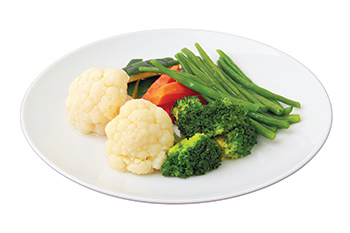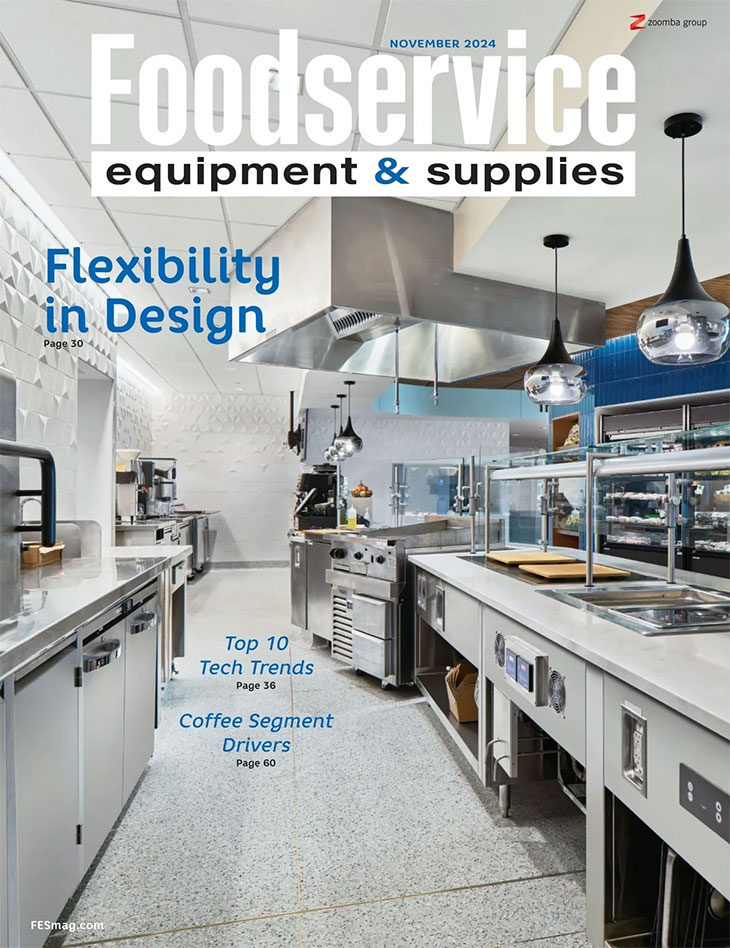Foodservice operators typically use steamers to cook menu items like vegetables, seafood, potatoes and rice because this equipment usually provides fast production and helps the food retain moisture, nutrients and color.
 Operators can choose from countertop and floor models, depending on the volume and application. Countertop and small floor-model steamers work well in lower-volume foodservice facilities, while large floor-model units are more suitable for high-volume operations. Smaller steamer models will typically accommodate 3 to 5 12-inch-by-20-inch-by-2.5-inch steam pans. Most larger units will accept both sizes, generally holding 14 12-inch-by-20-inch-by-2.5-inch steam pans and 7 18-inch-by-26-inch sheet pans. Some models are stackable, which allows operators to handle greater capacities in the same footprint. The most common sizes hold three, five or six pans.
Operators can choose from countertop and floor models, depending on the volume and application. Countertop and small floor-model steamers work well in lower-volume foodservice facilities, while large floor-model units are more suitable for high-volume operations. Smaller steamer models will typically accommodate 3 to 5 12-inch-by-20-inch-by-2.5-inch steam pans. Most larger units will accept both sizes, generally holding 14 12-inch-by-20-inch-by-2.5-inch steam pans and 7 18-inch-by-26-inch sheet pans. Some models are stackable, which allows operators to handle greater capacities in the same footprint. The most common sizes hold three, five or six pans.
As for the number of compartments necessary, a single one-compartment steamer is generally required for up to 200 meals per hour. For 200 to 400 meals per hour, a single two-compartment unit will meet demand. Operations producing 400 to 600 meals per hour will need one three-compartment unit. And, to prepare 600 to 800 meals per hour, operators need either a single four-compartment unit or a pair of two-compartment units.
The three major models of steamers are pressure (boiler-based), pressureless (convection) and connectionless.
Boiler-based steamers utilize 5 to 15 pounds of pressure per square inch (PSI) and cook at 228 degrees F to 250 degrees F. Generally speaking, low-pressure steaming units have a lower operating cost and higher productivity than pressureless units when preparing single items.
Pressureless steamers cook at 0 PSI and 212 degrees F. The convection of steam transfers the heat. Unlike pressure cookers, pressureless steamers put steam in direct contact with food products. Another difference is that operators can open the doors of pressureless steamers to check or season food at any time. These units are generally smaller and cook more slowly than pressure steamers.
Small- and medium-sized operations that lack water utilities or drains tend to use connectionless steamers. Although these units feature longer cook times, utility costs tend to be lower. This is because boilerless and connectionless units use between 1 and 3 gallons of water per hour versus a boiler/connection unit, which uses 30 to 50 gallons of water per hour.
Some steamers can act as a holding unit, with water boiling at 212 degrees F to hold the cavity temperature at 180 degrees F. For added flexibility, some models are capable of accommodating double-stacked pans.
Options include a super-heated steam feature, which allows operators to cook product faster using less energy. Low-water steamers are available that can cut water usage in half.
A newer feature on some vented and nonpressurized steamers, condensate caps are small boxes situated on the top of this equipment that capture vented steam and route it through the coil system. This allows water to go down the drain or back into the unit, preventing condensation from building on the kitchen ceiling.
When water boils, calcium, lime scale and minerals harden and get left behind. For this reason, water filtration becomes a key component to problem-free steamer operation and an extended service life.
One advantage of boilerless units is that the cooking cavity is more easily cleaned, whereas boiler units require use of a deliming solution and more extensive cleaning process.











